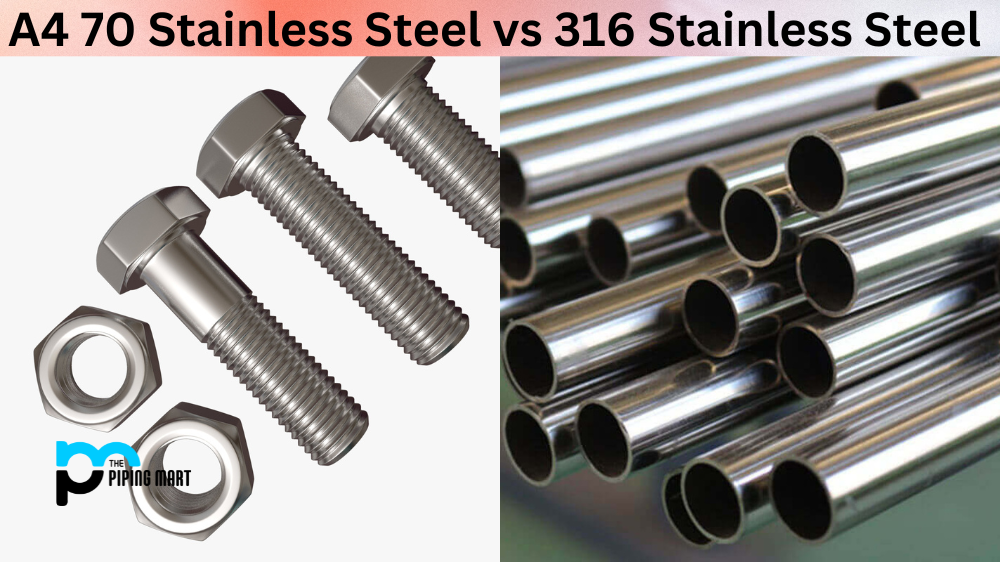When it comes to finding the right material for your project, there are often many options to choose from. Two common types of stainless steel used in numerous applications are A4 70 and 316. So what’s the difference between them? Let’s take a closer look at their properties and applications to find out.
A4-70 Stainless Steel
Also known as Grade 304 or 18/8, A4 70 stainless steel is austenitic steel composed of 18% chromium and 8% nickel. This type of steel is corrosion-resistant, has good formability characteristics, and is easy to clean. It also has excellent weldability, which makes it ideal for fabrications that require welding. A4 70 stainless steel is most commonly used in food processing equipment, kitchen sinks, medical equipment, architectural trim, boat fittings, chemical containers, and general industrial parts. It also meets requirements set by the pharmaceutical industry due to its high level of resistance to various corrosive chemicals.
316 Stainless Steel
316 stainless steel is an austenitic chromium-nickel-molybdenum alloy with an added molybdenum element which improves its corrosion resistance compared to other alloys of stainless steel such as A4 70. In addition to having excellent creep strength at elevated temperatures up to 1150°C (2100°F), 316 stainless steel has superior pitting resistance when exposed to chlorides and other corrosive elements, making it ideal for use in marine environments or other areas where exposure to salt water or chloride solutions could occur. Common uses for this material include chemical processing equipment, valves and pumps, condensers in power plants, seawater equipment such as desalination plants and heat exchangers in paper mills.
Difference Between A4-70 Stainless Steel and 316 Stainless Stee
Corrosion Resistance
One of the main differences between A4 70 stainless steel and 316 stainless steel is their corrosion resistance. Both types of stainless steel are highly resistant to corrosion, but A4 70 stainless steel is slightly more resistant than 316 stainless steel. This difference is due to the higher concentration of molybdenum in A4 70 stainless steel.
Tensile Strength
Another difference between A4 70 stainless steel and 316 stainless steel is their tensile strength. Both types of stainless steel have high tensile strengths, but A4 70 stainless steel is slightly stronger than 316 stainless steel. This difference is due to the higher concentration of molybdenum in A4 70 stainless steel.
Cost
One final difference between A4 70 stainless steel and 316 stainless steel is their cost. A4 70 stainless steel is typically more expensive than 316 stainless steel due to its higher concentration of molybdenum. However, both types of Stainless Steel are relatively affordable compared to other metals.
Conclusion:
When deciding between A4 70 stainless steel and 316 stainless steel for a project or application, it’s important to consider where the material will be used as well as what conditions it will be exposed to. While both materials offer excellent corrosion resistance when exposed to certain environments, they may not meet requirements if put into harsher conditions, such as marine environments or areas with highly concentrated chlorides present, like swimming pools or hot tubs. Ultimately understanding the differences between these two materials can help you select the one that’s best suited for your specific application needs.

Abhishek is a seasoned blogger and industry expert, sharing his insights and knowledge on various topics. With his research, Abhishek offers valuable insights and tips for professionals and enthusiasts. Follow him for expert advice on the latest trends and developments in the metal industry.




